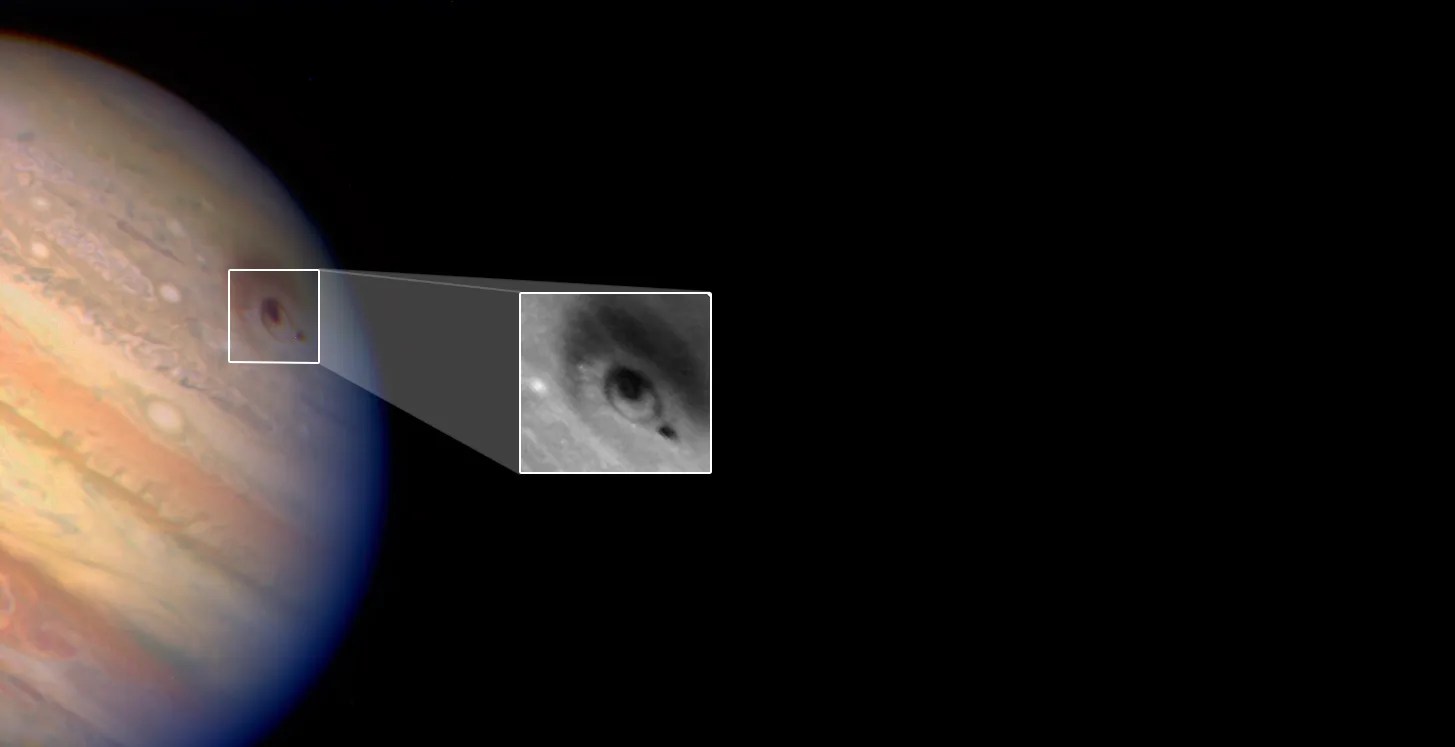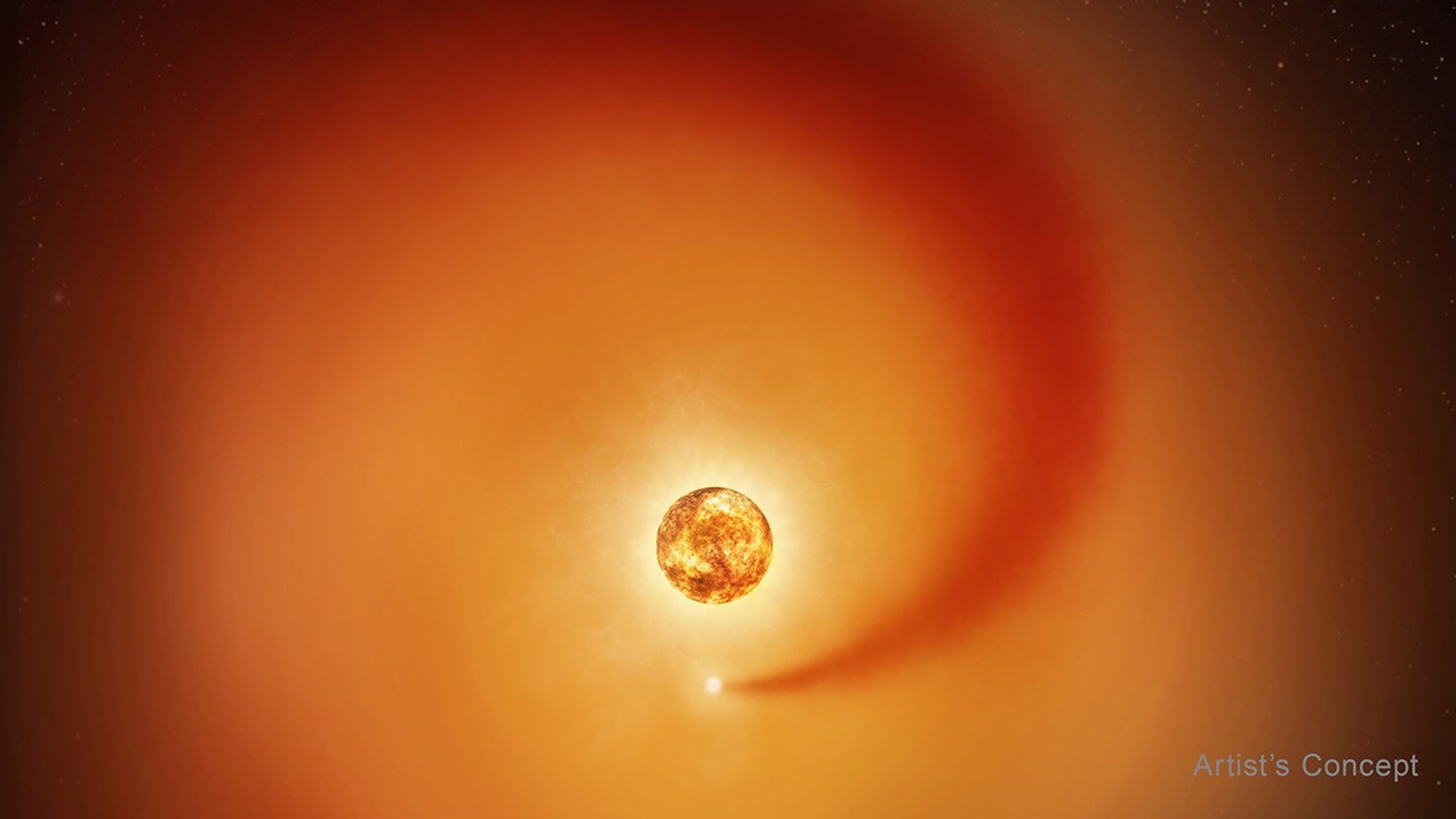In July 1994, the Hubble Space Telescope was poised to use its newly fixed optics to observe one of the most impressive astronomical events of the century - the 21 fragments of Comet Shoemaker-Levy 9 impacting Jupiter. But these observations almost didn’t happen.
NASA/Goddard/Katrina Jackson
Astronomers Carolyn Shoemaker, Eugene Shoemaker and David Levy discovered a comet in March 1993 that looked unusually stretched out. It was eventually determined that the comet had been ripped apart by Jupiter’s gravity into numerous fragments, and they were on a direct collision course with Jupiter over July 16 through 22, 1994. Having never directly observed two extraterrestrial solar system bodies collide before, no one knew exactly what they could expect to see when this happened. Astronomers and space enthusiasts across the world were determined to capture this unprecedented event.
This was a perfect opportunity for the Hubble Space Telescope. The observatory had its first servicing mission in December 1993. Astronauts installed corrective optics to solve the issue of its flawed primary mirror, upgraded the telescope’s computer, replaced several pieces of hardware, and boosted its orbit. Hubble was in prime condition and ready to show the world the full extent of its capabilities.
Then on July 5, 1994, Hubble entered one of its first states of protection when something on the telescope went wrong - something called “inertial hold safemode.” Engineers on the ground at NASA’s Goddard Space Flight Center in Greenbelt, Maryland, quickly went to work trying to find the source of the problem. Knowing that the fragments of Comet Shoemaker-Levy 9 would start impacting Jupiter in 11 days, they hoped it would be a quick fix.
They tracked the issue to a failed memory unit in the telescope’s flight computer. The engineers realized they luckily already had a backup source of memory onboard the observatory - a coprocessor the astronauts installed during the first servicing mission. The coprocessor had not yet been configured to operate with the flight computer, and normally the team would take their time and stretch this reconfiguration process out over a month. But the engineers knew that if they expedited this task and focused their efforts right away on reconfiguring the telescope’s memory, Hubble could be back up in time for the comet observations.
On July 7, while the team was working on reconfiguring the memory, Hubble entered a deeper protective state used for more serious operating issues - what’s known as “zero gyro sun point safemode.” Now the telescope was presenting a more puzzling and worrisome problem. It was acting as if two of its gyroscopes, devices used to keep the telescope’s orientation steady, had failed. If this was true, it seemed uncertain that Hubble would be operating in time for the Comet Shoemaker-Levy 9 impacts.
However, all six of the gyroscopes had just been replaced during the first servicing mission. Something else was at play, possibly a problem with the telescope’s flight computer, which would be just as serious an issue. Senior-level NASA officials were starting to get concerned that whatever had happened would not only prevent the team from getting the comet observations, but could threaten the safety of the telescope.
To find out what happened next, watch the fourth Hubble Memorable Moments video: Comet Impact.
In this letter from July 13, 1994, NASA Goddard engineer Brian Vreeland is recognized for his role in recovering the Hubble Space Telescope in time to observe the Comet Shoemaker-Levy 9 impacts at Jupiter:
“Hubble Memorable Moments: Comet Impact” can be downloaded at:
For more information about the Hubble Space Telescope and its 25th anniversary festivities, visit:




































